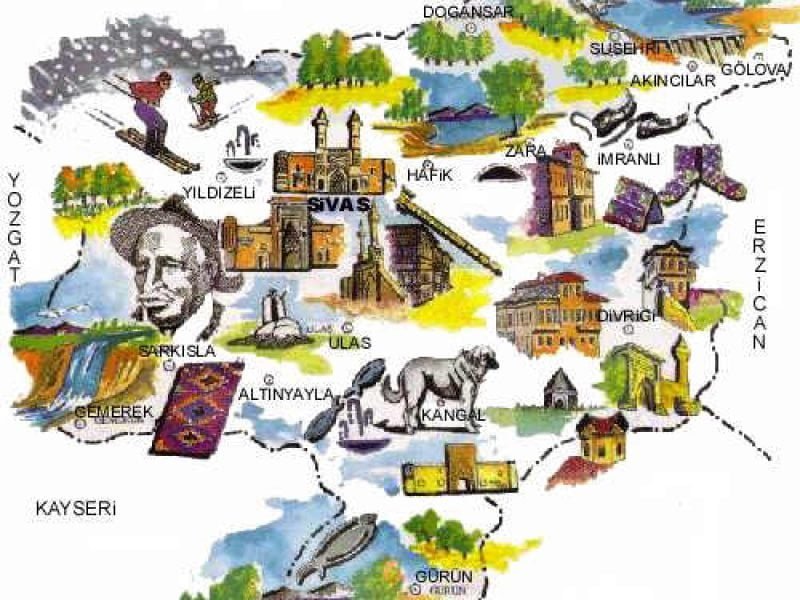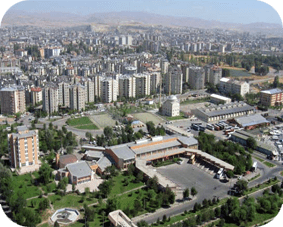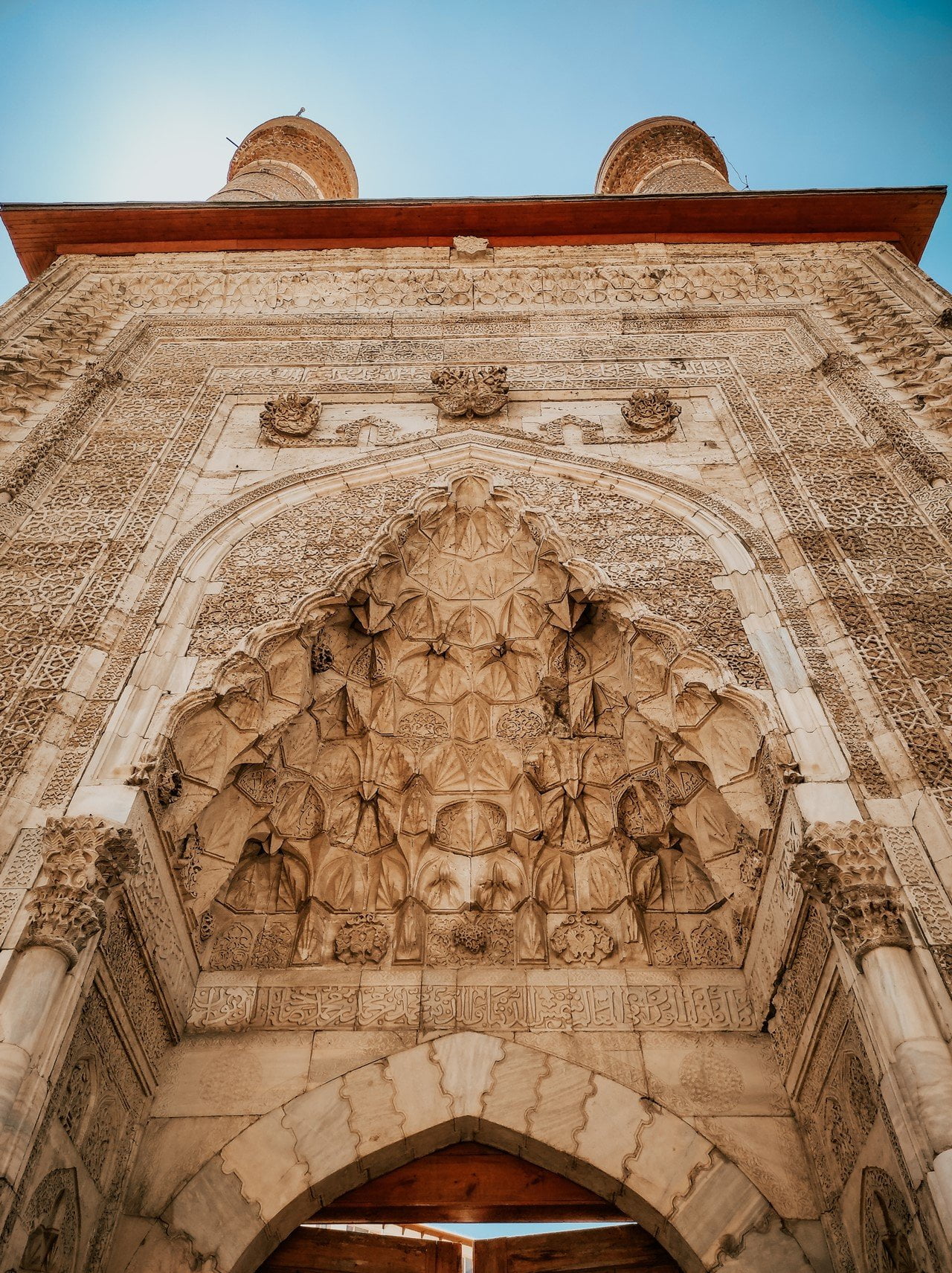SIVAS
Sivas, an important commercial center stood, during the Middle Ages, at the junction of the caravan routes to Persia and Baghdad. Between 11 42 and 11 71 it was the capital of the Danigmend Emirs and a vitally important urban center during Seljuk rule. The remaining architectural monuments reflect Sivas’s former prominent position. The Ulu Mosque dates from the Danismend Emirate but the Seljuk buildings: the 13th century Izzeddin Keykavus Sifahanesi – a hospital and a medical school – the beautifully decorated Gök Medrese, the twin minarets of the Cifte Minare Medrese as well as the Buruciye Medrese all testify to the exciting aesthetic of the Seljuk period. In 1919, the decision to liberate Turkey from the occupying foreign powers was made by the National Congress which had convened in Sivas. Today the 19th century building where the congress was held has been restored as the Ataturk and Congress Museum, with a display about the War of Independence as well as an ethnographical exhibit. In town there are excellent Sivas carpets for sale; the city has long had a reputation for fine weaving. Kangal, 68 km south of Sivas, is the home of Turkey’s most famous breed of dog – the Kangal.
Used as sheep dogs, these golden haired animals have also proven themselves in police and security work. Twelve kilometers northeast of Kangal is the famous spa, Balikli Kaplica, where scores of tiny fish swim in hot spring waters and aid, it is said, in the cure of skin complaints. Once a Byzantine outpost, Divrigi became the capital of the Turkish Mengucek Emirs in the 12th and 13th centuries. Although very much off the beaten track, visitors come to Divrigi to see the Ulu Mosque and Medrese of 1229. Seljuk stonework reached its most exuberant in the animal and vegetal carvings of the portals. UNESCO declared this site one of the world’s most important cultural heritages. Founded in ancient times Kirsehir became, in the Middle Ages, the center of the Ahi Brotherhood, a Moslem sect whose moral and social ideals played an important role in the spiritual and political life of Anatolian towns. Among Kirsehir’s many fine Seljuk buildings are the Cacabey Mosque of 1272 (a former astrological observatory), the Alaeddin Mosque of 1230, and the Ahi Evran Mosque beside which is the tomb of the founder of the Ahi sect. Out of town, on the road toward Kayseri, is the attractive Asik Pasa Mausoleum which was built during the period of Mongol rule, in 1333.






0 Comment